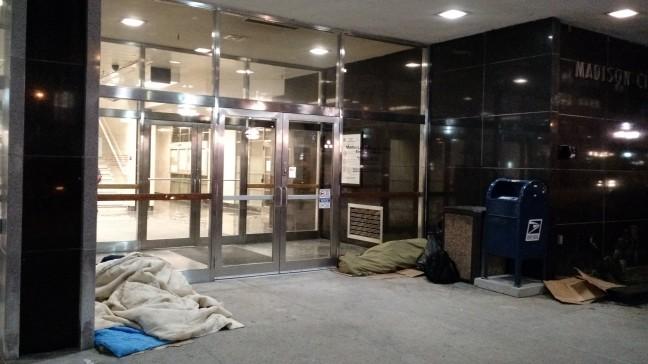Madison Mayor Paul Soglin thinks the city has a “drifters” problem. But after Soglin suggested ways to get rid of the State Street area dwellers, city officials are questioning whether there is enough shelter to accommodate the homeless.
The number of homeless people in downtown Madison is on the rise as warmer months approach. But, while Soglin wants people to stay in shelters instead of on the streets, Ald. Mike Verveer, District 4, said this isn’t a long-term solution.
Each person has a certain number of days they can stay at any given shelter, but this guideline is frequently put aside in winter due to the extreme cold.
By March and April, many chronically homeless people surpass the number of days homeless shelters allot in order to stay below capacity, and are forced to spend their nights on the street, Verveer said.
A lack of affordable housing in Madison is one of the reasons that there are so many people on the streets, Verveer said.
In Soglin’s campaign for mayor earlier this year he called for an additional 5,000 units of low-income housing although the feasibility of the plan was called to question in mayoral debates.
In an initial first step toward achieving that goal, the Wisconsin Housing and Economic Development Authority recently announced the city received $23.3 million in federal tax credits toward the development of more low income housing units.
These buildings, however, will not be built in the downtown area due to the high cost of land, Verveer said.
The incoming federal tax credits will allow the city to build 750 units, preferably near necessary amenities such as grocery stores, bus routes and jobs, Matthew Wachter, Dane County Housing Authority housing initiative specialist, said.
“We are taking a much more proactive approach towards this than we have in the past,” Wachter said.
Roughly one-third of these new units will be specifically for people who are currently homeless, according to a City of Madison statement. People with incomes from zero to $40,500 should be able to access to affordable housing according to Soglin’s definition.
An email Soglin sent to City Council last week was met with backlash from homeless advocates.
The email introduced a clear cut call from Soglin to reduce an increasing number of drifters in downtown Madison, and remove several new encampments around State Street.
His concerns were primarily centered around the health issues related to the influx of homeless people.
He mentioned individuals “clearly under the influence of narcotics occupying the benches near Urban Outfitters,” several hypodermic needles found laying in the grass near The Towers and discarded clothing, including “feces laden pants.”
“The combination of city and county policies that encourage drifters to come to Madison, and the concerted efforts of others to send them here has reached an intolerable level,” Soglin wrote.
In early February City Council members made moves toward adding Madison’s homeless to the list of protected classes in a proposal that has not yet been passed. If successful, this would combat discrimination that restricts homeless individuals from getting jobs or finding access to housing.
“As much as this city does to provide resources, it seems we are never doing enough,” Verveer said. “There are always so many people on the streets in downtown Madison, despite our best efforts.”


